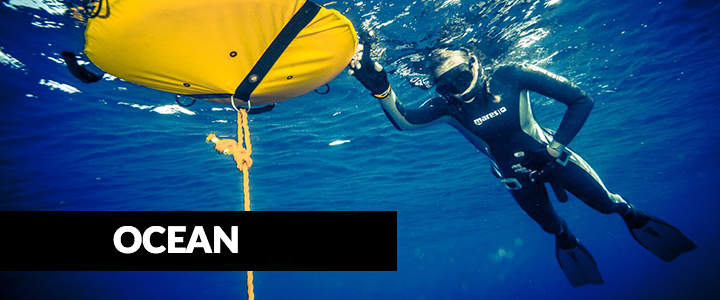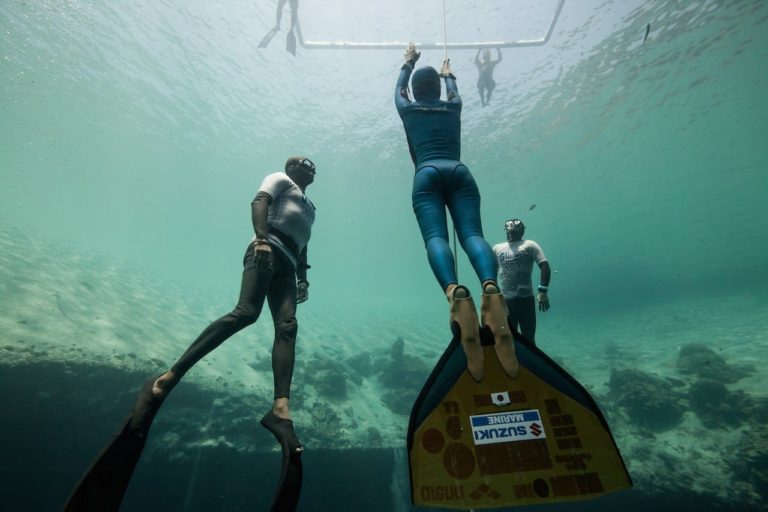
However, when the door opens and their one step away from a 10,000-foot drop, a little apprehension is perfectly normal. Obviously, they want to do it, or they wouldn’t have paid the money, sat through the safety training, put on the gear, and gotten on the plane. I think it’s kind of like someone going skydiving for the first time. The major reason the student/instructor relationship is important is understanding what the goal is, what the student’s capabilities are, and understanding where the line is. I find that when people start to get past the 3 – 4-minute range, the approach becomes far more individual and this is when the relationship with your Instructor becomes very important. Most PFI Instructors that I know have a fairly similar approach, at least at the beginner/Freediver level, to help their students through the actual breath-hold phase of the static apnea. A word on instructor/student relationships Not only are ventilation breaths a fantastic relaxation tool, but the almost mantric chanting of the instructions also gives the student’s thoughts something to latch onto rather than something anxiety-inducing. Instead, we talk them through their breathe-up, giving specific instructions and counting through the ventilation breaths. We could just start counting down to ‘official top’ (the designated start time of an athlete’s performance) the same way that’s done in a competition, but that provides a lot of time and space for a student’s self-doubt to creep in. The next piece is the way we conduct our static sessions. Aside from genuinely being the most important aspect of the Freediver course, this sets a tone that this is a relatively safe environment. It’s the lengthiest portion of the Freediver academics and it’s the first thing we cover when we get to the pool. The first step in achieving successful performances is the reason I choose to use the PFI education system: a strong foundation in safety and problem management. Some such courses would be PFI Freediver, Intermediate Freediver, Safe Buddy, or their equivalent. In water static session must be performed with a buddy that has received appropriate training to handle hypoxic events like a Loss of Motor Control (LMC) or blackout.

The number one rule in freediving including statics is that you NEVER do it alone. If you’re not already familiar, static apnea is basically floating face down in a pool to see how long you can hold your breath. The first real performance of a freediving course, and often the most challenging from a pure apnea perspective, is the static apnea portion of the course. So, what does this really mean to us and how do we overcome it to achieve better performances? When you tell a new student that they can hold their breath for two minutes, the doubt comes fast and hard. People generally don’t doubt that the Low-Pressure Inflator button will add air to the BCD.

When you’re learning to freedive, the equipment you’re learning to use is your body, and that’s an entirely different experience.
#Flowstate freediving how to
Breathe through this and don’t ever stop breathing.” I know that’s overly simplified, but fundamentally a SCUBA course is one that teaches you how to use equipment and, like any good equipment, it does what it’s supposed to do when you maintain it and use it properly.

Push this button to decrease your buoyancy. As a freediving instructor and SCUBA instructor, I tell people all the time that teaching someone how to SCUBA dive is relatively straightforward: “Push this button to increase your buoyancy. I happen to think this is the greatest challenge for a Freediving Instructor. However, to the new student in a freediving course, these can be things that mean very little in practice when the contractions start and the anxiety sets in. Having the mindfulness to achieve total and complete relaxation can be the ultimate flow state.

To the seasoned freediver, these things are related, obvious, and often part of the drive to continue freediving. There are two things that I tell all of my Freediver students: “Freediving is competitive relaxation” and “Freediving is 90% mental”. Static Apnea: Pushing Our Limits as Safely as Possible


 0 kommentar(er)
0 kommentar(er)
